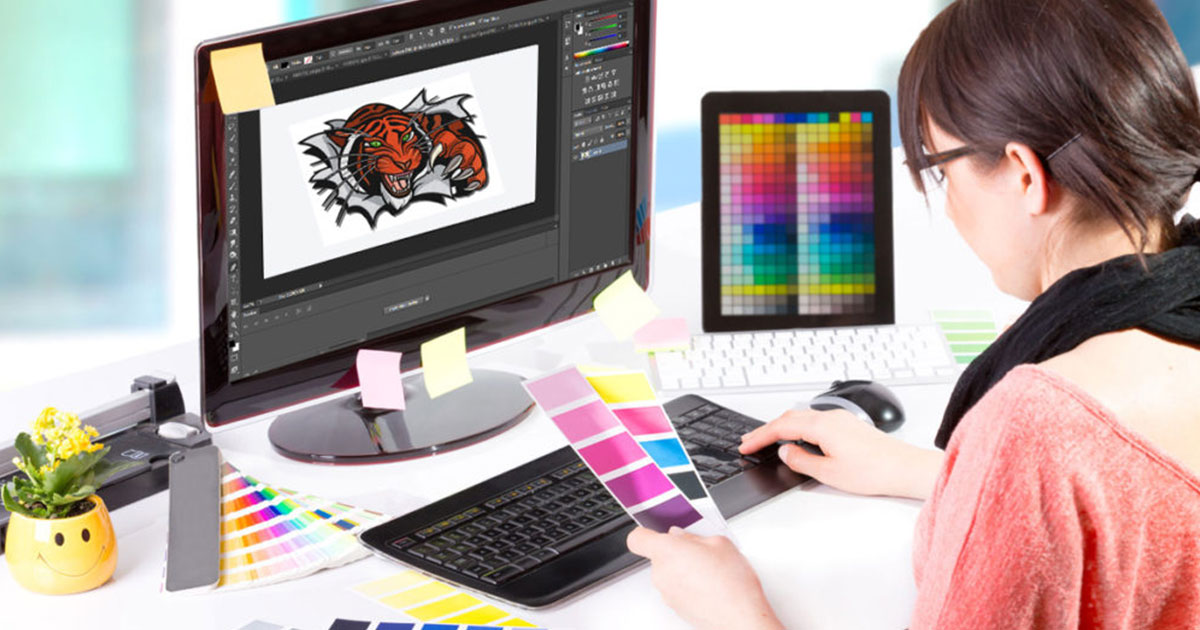Custom-made Digitizing for Embroidery: Customized to Your Needs
Wiki Article
Understanding the Needlework Digitizing Process: Your Ultimate Overview
Embroidery digitizing is a careful craft that requires accuracy and expertise to convert complex designs into electronic formats for equipment embroidery. As artisans embark on this journey to grasp the embroidery digitizing procedure, a comprehensive understanding of the essentials establishes the structure for excellence.
Understanding Needlework Digitizing Essentials
Embroidery digitizing fundamentals create the foundation whereupon intricate designs are equated right into machine-readable styles for precise sewing. This first step in the needlework digitizing procedure is crucial for ensuring that the final embroidered product is a devoted depiction of the original design. Understanding needlework digitizing basics involves comprehending vital concepts such as stitch types, stitch direction, thickness, padding, and draw payment.Sew types play a vital role in figuring out the aesthetic and textural outcome of the embroidered style. By choosing the proper stitch type, whether it be satin, fill, or running stitch, digitizers can attain the wanted impact and boost the total top quality of the embroidery. Additionally, sew direction affects the circulation and dimension of the design, while thickness establishes the spacing and coverage of the stitches.
Furthermore, padding sewing offers stability to the style by securing the textile and protecting against distortion throughout the embroidery process. Pull settlement is an additional important factor to consider to combat the all-natural tendency of material to agreement when sewn. Mastering these embroidery digitizing essentials is essential for developing professional-quality embroidered products.
Choosing the Right Digitizing Software Application
Picking the suitable digitizing software is a vital choice that significantly affects the performance and high quality of the needlework digitizing process. Digitizing for Embroidery. When choosing the appropriate digitizing software application, it is important to take into consideration elements such as the intricacy of layouts you prepare to create, the user-friendliness of the software, the level of customer assistance offered, and the compatibility with your needlework machineThere are various digitizing software program alternatives readily available on the market, ranging from basic programs for newbies to advanced software program for specialist digitizers. Some preferred selections include Wilcom EmbroideryStudio, Hatch Embroidery Software Program, and PulseID. These software program plans supply a vast array of tools and features to help you develop detailed layouts effortlessly.
Before making a decision, it is recommended to check out the various software application choices via totally free tests or demonstrations to figure out which one best fits your needs. Furthermore, reviewing evaluations and looking for suggestions from skilled digitizers can supply beneficial understandings into the strengths and weak points of each software bundle (Digitizing for Embroidery). By carefully reviewing your demands and contrasting the features of various digitizing software, you can make an educated option that boosts your needlework digitizing process
Digitizing Devices and Methods

Optimizing Style Settings for Needlework
Understanding the intricacies of design settings is essential in attaining optimum lead to the embroidery digitizing process, building upon the foundation laid by understanding digitizing tools and techniques. When optimizing design settings for embroidery, it is necessary to take into consideration variables such as stitch kind, thickness, padding, draw payment, and enrollment. Sew kind option influences the general feel and look of the style, with choices like satin, fill, and running stitches offering various structures and impacts. Density refers to the spacing and thickness of stitches, influencing the design's coverage and sturdiness. Proper underlay sewing gives security and prevents material distortion, especially for complicated designs or on elastic materials. Pull payment adjusts for textile stretch during sewing, making sure exact design duplication. Registration settings line up various aspects of the layout precisely, preserving total design stability. By fine-tuning these style setups, embroiderers can boost the top quality and accuracy of their stitched productions.
Troubleshooting Common Digitizing Issues
When running into typical digitizing problems throughout the needlework procedure, it is vital to comprehend the source and apply effective options without delay. One common trouble is stitch density issues, where stitches may be too dense, creating the material to pucker, or Discover More Here as well thin, leading to gaps in the style. Changing the stitch density setups in the digitizing software program can assist settle this problem.Another regular difficulty is string breaks during the embroidery process. This can happen due to different factors such as wrong tension setups, boring needles, or making use of low-quality string. Guaranteeing appropriate maintenance of the needlework equipment, consisting of routine needle adjustments and stress changes, can reduce the occurrence of string breaks.
In addition, design enrollment errors can result in misaligned aspects within the embroidery layout. Checking the style placement in the digitizing software application and making essential modifications before stitching can aid in preventing this problem. By dealing with these usual digitizing concerns without delay and effectively, you can make certain a smoother embroidery process and top quality finished products.
Conclusion
To conclude, grasping the embroidery digitizing process needs a solid understanding of the basics, the ideal choice of software program, and expertise of devices and techniques. Optimizing design setups and troubleshooting usual digitizing concerns are important steps in guaranteeing high-grade needlework outcomes. By adhering to these actions faithfully, one can achieve precision and effectiveness in the digitizing process.Report this wiki page